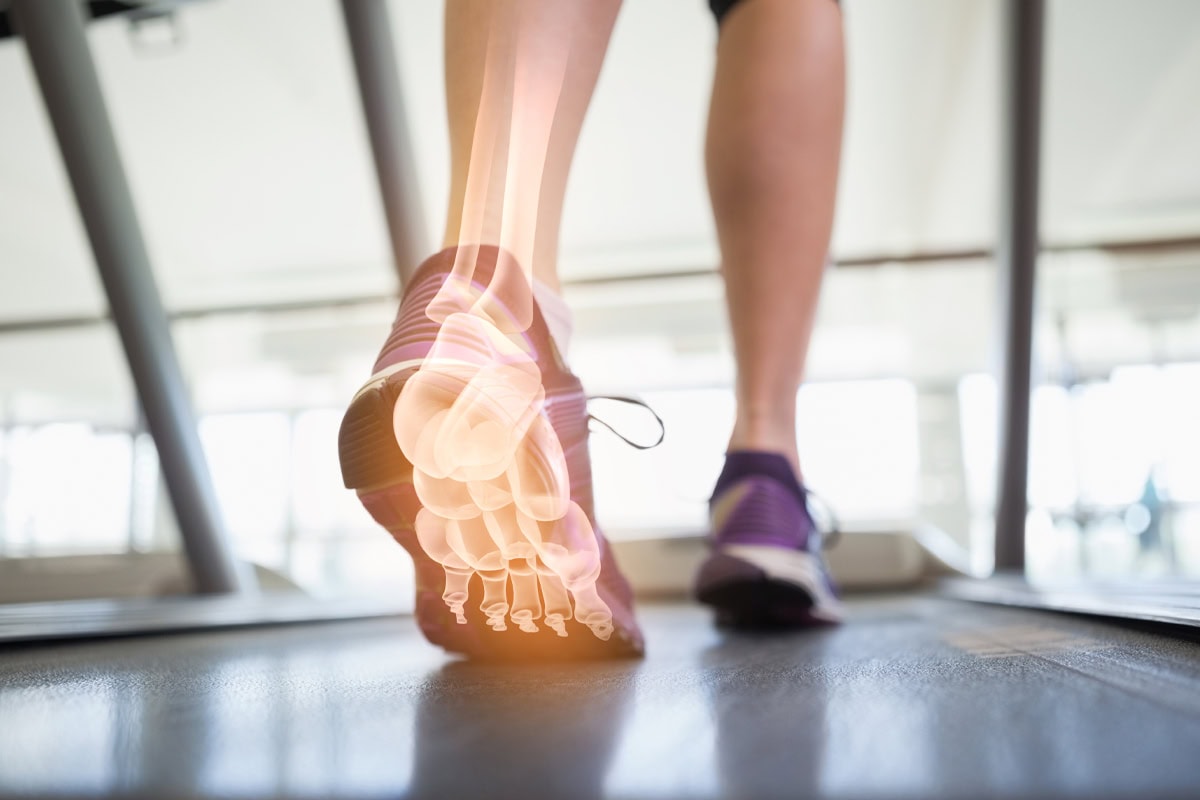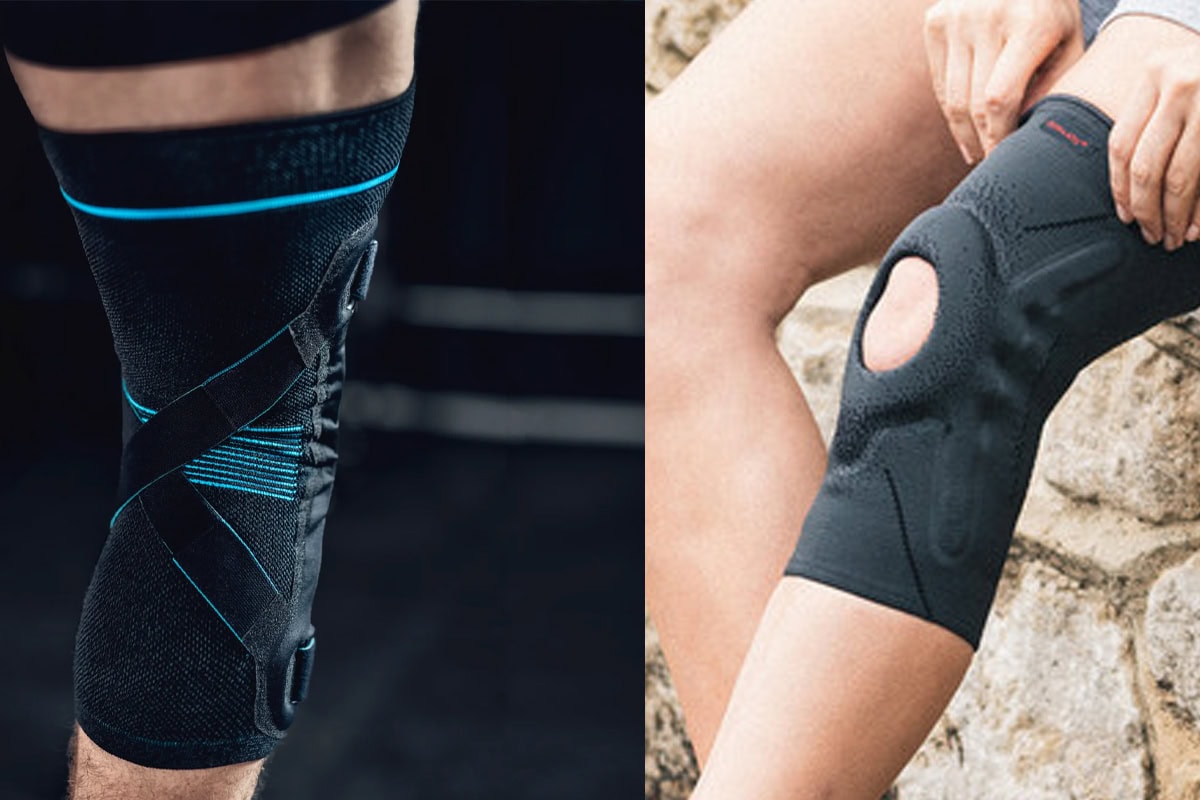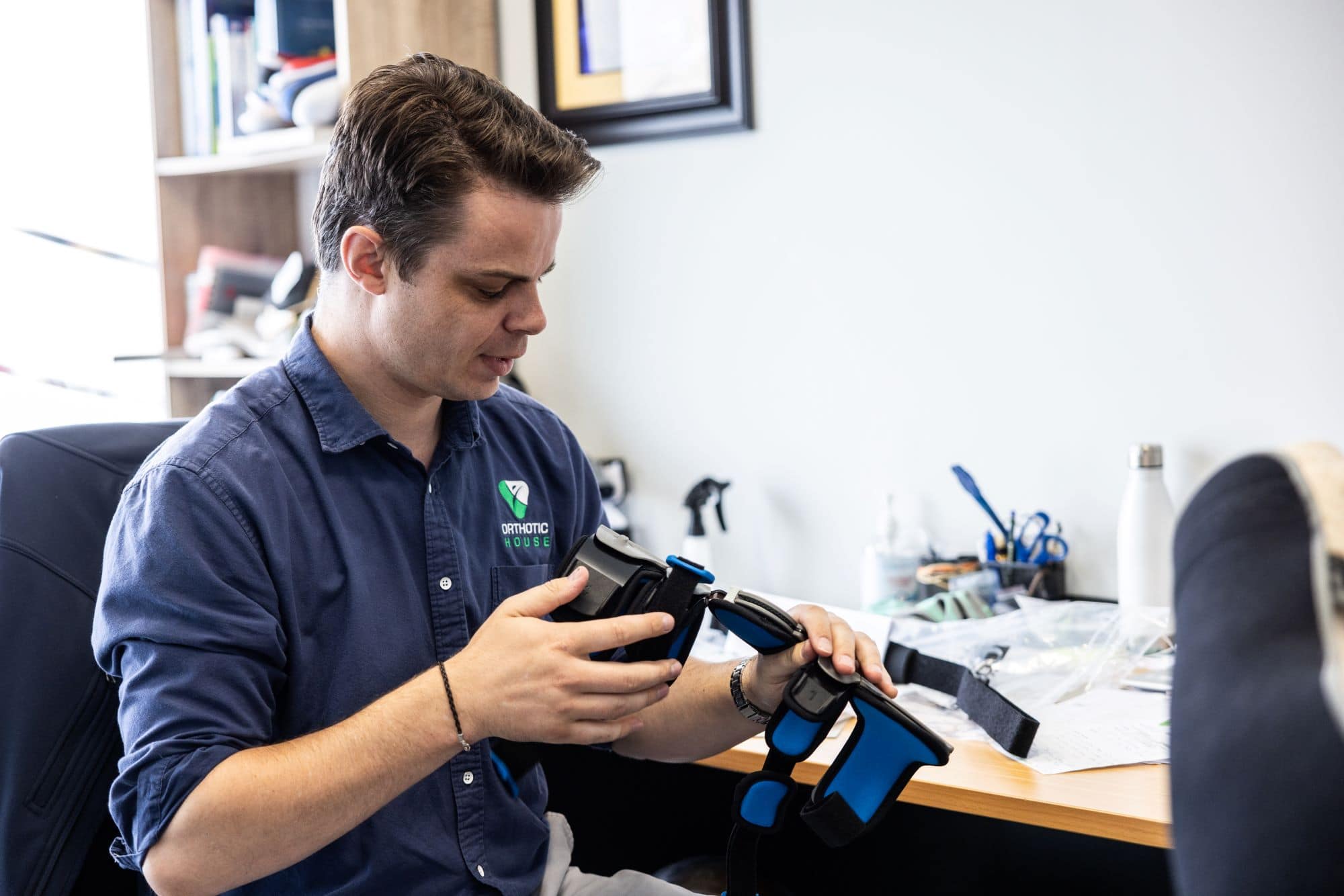Orthotics play a significant role in supporting active aging by enhancing mobility, reducing pain, and promoting overall functional independence for older adults. As we age, our bodies undergo changes that can impact posture, joint function, and muscle strength, which can contribute to conditions like arthritis, balance issues, and limited range of motion. Here’s how orthotics can provide mobility support for seniors and help address these challenges:
1. Pain Relief and Pressure Distribution
- Arthritis and Joint Pain: Orthotic devices, like insoles or knee braces, can help redistribute pressure from affected joints, reducing strain and alleviating pain. For example, custom insoles can provide cushioning and support to the feet, easing discomfort caused by osteoarthritis or other joint issues.
- Posture Improvement: Certain orthotics, such as back braces or posture-correcting devices, can improve posture, reducing strain on the spine and musculoskeletal system, which is especially important as age-related changes in posture and spinal health are common.
2. Enhancing Mobility and Balance
- Foot Support: Many older adults experience balance issues or foot deformities like bunions or flat feet. Custom-made orthotics can help stabilise the feet, reduce discomfort from deformities, and improve overall gait, which in turn supports balance.
- Walking Aids: Orthotics in shoes or ankle supports can help improve stride and walking efficiency, allowing seniors to walk longer distances with less fatigue. This is critical for maintaining an active lifestyle, as walking is one of the most accessible forms of exercise for older adults.
3. Support During Physical Activities
- For seniors who remain active through exercises like walking, swimming, or even light jogging, orthotics provide stability and alignment, reducing the risk of overuse injuries. Certain orthotic devices can be designed specifically for sports or physical activity, improving comfort and performance.
4. Improving Functionality for Chronic Conditions
- Diabetes: People with diabetes are at higher risk for foot problems, including ulcers or neuropathy. Custom diabetic orthotics help reduce the risk of these complications by ensuring even pressure distribution and better overall foot health.
- Post-Stroke Recovery: Orthotics can be helpful for those recovering from a stroke by improving limb alignment, reducing spasticity, and supporting the proper range of motion.
Footwear and Bracing for Arthritis
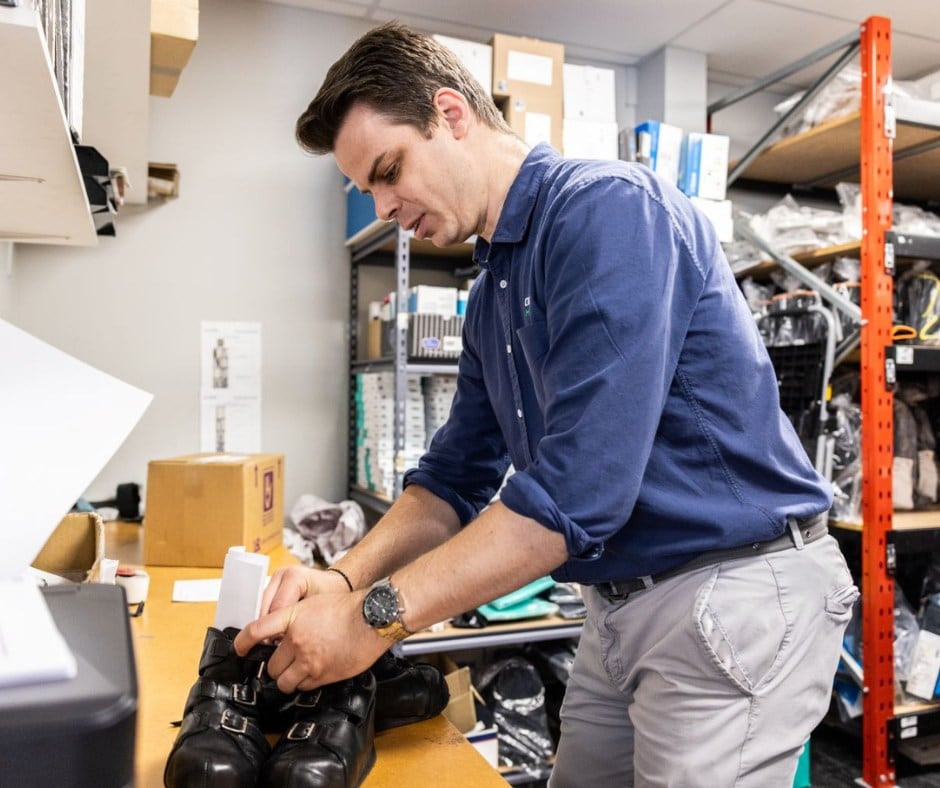
Bracing for arthritis and choosing the right footwear are crucial components in managing the challenges that come with aging, especially for those living with arthritis. Both can significantly improve mobility, reduce pain, and help seniors maintain their independence. Let’s break down how these two elements play a role in supporting active aging.
Arthritis is a condition that causes inflammation in the joints, often leading to pain, stiffness, and reduced range of motion. Bracing can help alleviate some of the discomfort associated with arthritis by stabilising the affected joint, providing support, and helping to redistribute forces more evenly across the joint. Here’s how bracing can be effective:
1. Knee Braces
Knee braces are one of the most common types of braces used for arthritis, especially for those with osteoarthritis (OA). These braces can provide support to the knee joint, alleviate pressure on the cartilage, and reduce pain during movement.
- Types:
- Off-loading braces are designed to shift the load away from the damaged part of the knee to reduce pain and improve function.
- Compression sleeves can help reduce swelling and provide mild support, improving comfort during daily activities.
- Off-loading braces are designed to shift the load away from the damaged part of the knee to reduce pain and improve function.
2. Wrist and Hand Braces
Arthritis in the hands and wrists can lead to joint deformities and wrist pain, making it difficult to grasp or hold objects. Hand and wrist braces can help stabilize the joints, prevent excessive movement that causes pain, and reduce inflammation.
- Types:
- Splints or wrist braces help support the wrist while allowing for some movement. These can be particularly helpful for people with rheumatoid arthritis (RA), which affects the smaller joints.
- Thumb spica braces are useful for individuals with arthritis affecting the thumb, which is common in aging adults.
3. Ankle Braces
For individuals with arthritis in the ankle or foot, ankle braces can reduce instability, prevent excessive movement, and provide compression, which helps reduce swelling. This is especially useful for people with ankle osteoarthritis or those recovering from ankle injuries.
4. Back Braces
Spinal arthritis (or spondylosis) is common as people age. Back braces can provide support to the lower back, reduce strain, and help maintain proper posture, which is key for preventing pain and stiffness in the spine.
A lumbar support brace can stabilise the lower back, while a posture-correcting brace helps maintain an upright posture to reduce stress on the spine.
Footwear for Supporting Aging and Arthritis
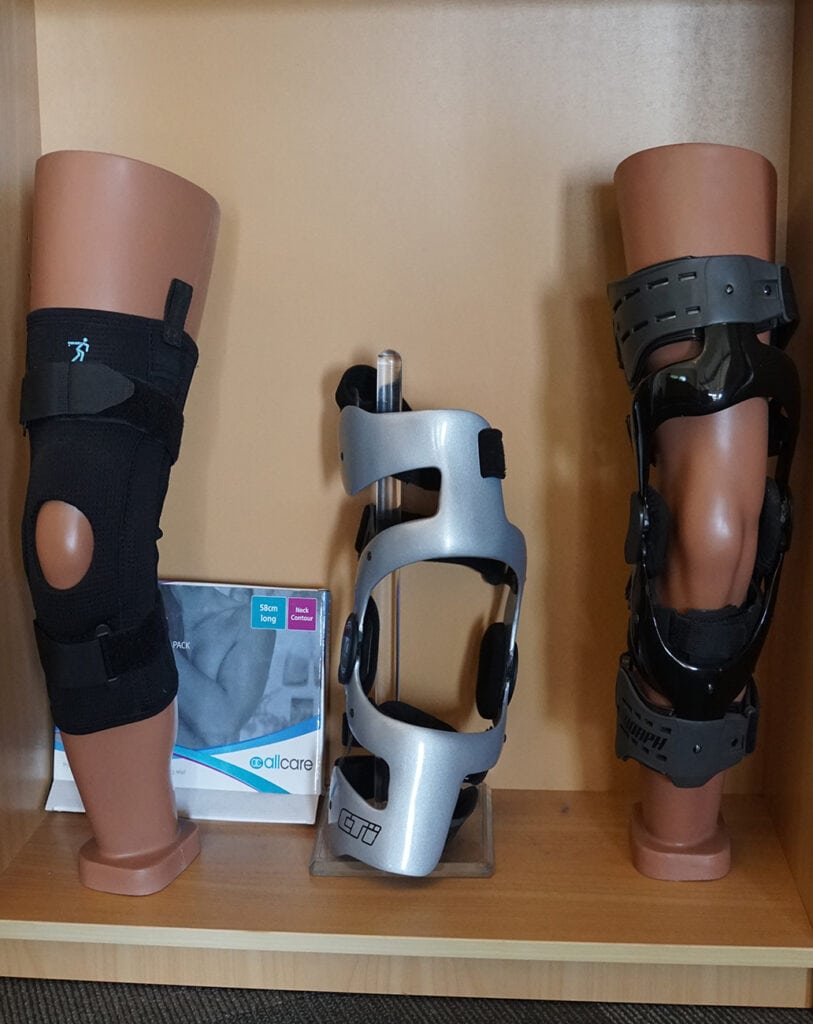
Footwear plays a pivotal role in managing arthritis, particularly for those dealing with foot, knee, or lower back pain. The right shoes can offer proper alignment, shock absorption, and prevent additional strain on the joints.
- Cushioned Insoles and Arch Support
Insoles that provide cushioning and arch support can help relieve the pressure on painful joints in the feet, knees, and hips. Custom orthotic insoles are especially useful for those with foot deformities such as flat feet, bunions, or plantar fasciitis, all of which can worsen with arthritis. - Features to Look For:
- Arch support helps align the foot properly, reducing strain on the knees and hips.
- Shock absorption in the insole can reduce the impact on joints with each step, especially for people with arthritis in the knees or hips.
- Shoes with Proper Arch and Heel Support
- Shoes with built-in arch support and heel support help reduce the stress placed on the feet, which in turn supports the knees and hips. For those with arthritis, the right shoes can improve gait, enhance stability, and reduce pain.
- Wide toe box to reduce pressure on bunions, hammertoes, and other foot deformities.
- Rocker bottoms sole: Shoes with a rocking or curved sole can help promote a more natural gait and reduce strain on the knees and hips. These types of shoes encourage a smoother walking motion, which is particularly helpful for people with osteoarthritis of the knee or hip.
- Comfortable, cushioned soles that provide support and minimise shock to the joints.
- Orthopaedic shoes that are specifically designed to provide enhanced support and comfort, especially for seniors with arthritis.
- Adjustable or Velcro Fastening/zip
As arthritis affects the hands and fingers, it can become difficult to tie shoelaces or fasten traditional shoes. Shoes with Velcro straps or elastic bands or zip offer a more convenient and comfortable alternative, allowing the wearer to put on or take off their shoes with ease.
Your Path to Pain Relief and Independence Starts with the Right Support
Both bracing and appropriate footwear are essential tools for managing arthritis, particularly as we age. Braces provide localised support and alleviate pressure on affected joints, while orthotic footwear enhances comfort, stability, and mobility. By addressing the pain points of arthritis, seniors can continue to lead active lives, stay mobile, and maintain their independence for as long as possible.
FAQs
1. What kind of orthotics are best for seniors with arthritis?
Custom orthotic insoles, back braces, and knee supports tailored to individual needs provide the most relief and mobility support for seniors.
2. How do orthotics help with balance and fall prevention?
By improving foot alignment and stability, orthotics help create a more balanced gait and reduce the likelihood of trips and falls.
3. Do I need a referral to get orthotics at Orthotic House?
No referral is needed. You can book a consultation directly at our Hamilton or Hastings clinic.
4. What features should I look for in shoes for arthritis?
Look for cushioned soles, arch and heel support, a wide toe box, and adjustable fastenings for ease of wear and joint relief.
